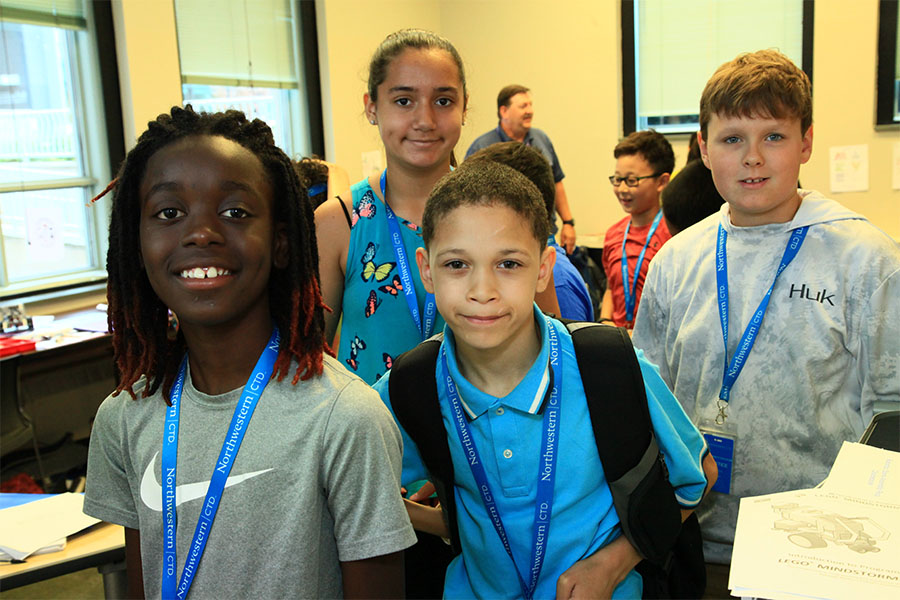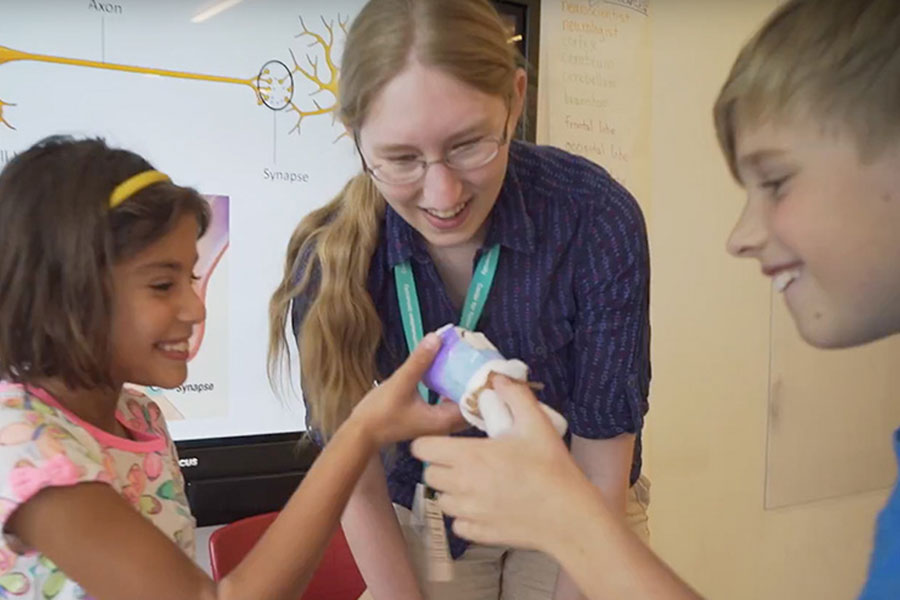Online Educator Insights: Instructors Adapt to Changing Educational Landscape
by Ross Middleton
As traditional classrooms move online, two CTD teachers have been able to smooth the transition by drawing on their e-learning experience. As instructors in CTD’s Gifted LearningLinks (GLL) online programs, Nancy Fenton and Matthew Wilen are familiar with some of the unique demands—and benefits—of conducting class in a digital environment.
Fenton and Wilen both used online tools in their classrooms prior to the COVID-19 outbreak, but teaching a course completely online is a different scenario. Fenton teaches AP Psychology and AP US Government and Politics outside of CTD, and notes that her prior “use of online resources has been highly effective in a variety of scenarios…including differentiating instruction, providing review materials, providing support to students with long-term absences from school, and even snow days.” Wilen teaches high-school physics and robotics, and he actively used several online solutions of his own design prior to the pandemic. “My robotics classes are taught in my school’s maker space,” he explains. “This forces me to share a room for physics. I can be messy when it comes to stacks of paper so I converted all my handouts to Google Docs (and others) a few years ago.” Wilen also had a library of pre-recorded lab content, which he previously used in the event of a student absence.
In addition to implementing practices honed in their full-time classrooms, both instructors looked to their time as CTD online educators when moving their current classrooms online. “My experiences teaching online through CTD have helped me to adapt to teaching online,” Fenton explains. “Some of the best practices that I use at CTD, of course, translate to my current teaching situation, including communication and structure.” Fenton adds that she was “already familiar with the various ways to use a learning management system for both synchronous and asynchronous learning.” She notes that synchronous learning—in which students can learn together at the same time in a shared environment—is “important for continuing to build engagement,” even if certain instructional opportunities may be limited. “Establishing norms for synchronous sessions and discussion posts helps students feel comfortable,” Fenton observes.
Though Fenton’s district does not currently use the same technology as CTD, Wilen’s school recently adopted the Schoology learning management system, and his prior CTD experience with Schoology proved an asset. “My colleagues knew that I was using Schoology with CTD, so I became a more convenient tech support for the department in the early adoption,” Wilen says. “When we moved to e-learning due to COVID-19, I reemerged as a tool for the department. The whole transition wasn’t too bad since I’ve been doing all online courses with CTD.”
Both instructors acted fast in making the transition to online-only instruction, with little time to prepare. “We did have one final faculty-only day that provided some training and exposure to our options,” Fenton says, though updated guidelines at the district and state level necessitated changes to plans. Wilen had a long weekend to prepare and says he no longer has students on Mondays: he is now able to use this day for virtual meetings and adjusting his syllabus for the coming week, if necessary.
According to Fenton and Wilen, many students have responded well to the move to online instruction, though both teachers note that not all students are experiencing the change in the same way. “Because many students have additional responsibilities and stressors at home, it is important to be flexible,” Fenton offers. “Online learning is likely a new experience for students,” she says, “and time should be devoted to instruction on effective online communication. Students can be taught to prompt peers to elaborate, engage in respectful discussions, ask for clarification, utilize active listening, and learn to read nonverbal cues during video discussions.” Certain subjects can also prove particularly challenging in an online environment. Some of Wilen’s students have been able to make creative robotics projects at home, but he notes that students without access to robotics kits are, unfortunately, “stuck at the research, brainstorm, design stage of the engineering process” for now.
For students and families navigating the move to online learning environments, Fenton and Wilen offer advice and valuable perspective. “Consistent practices and routines help students navigate the new school day,” Fenton observes. “Teachers in an online learning environment can create a safe space for student sharing and discussion by providing students with training in how to give feedback to peers,” she says, which can help students to develop lifelong communication skills in a trying time. Wilen advocates communication as well, in addition to resilience and calm. “Hang in there, don’t stress!” he says to students. “This is a huge adjustment for all of us, and your teachers are trying their best. I’m sure teachers will be understanding, patient, and flexible. Make sure you contact your teacher(s) with any problems you are having. Don’t be shy and give up!”
 Ross Middleton is an independent writer and formerly part of CTD’s Summer Program staff. He received his BA in English Literature from Wesleyan University and an MFA in Writing from Sarah Lawrence.
Ross Middleton is an independent writer and formerly part of CTD’s Summer Program staff. He received his BA in English Literature from Wesleyan University and an MFA in Writing from Sarah Lawrence.

